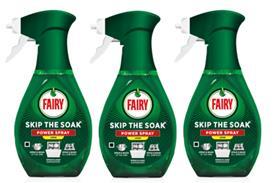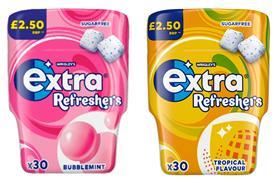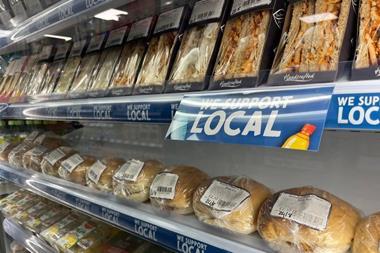Despite the fact that fish, yes fish, is now the second most frequently consumed protein behind chicken, with about one in five UK consumers now eating it at home three times a week, many convenience store retailers still eye the category with suspicion.
However, the tide, it seems, is about to turn. And turn it should when you consider its future growth predictions. The value of the seafood market - which includes fresh fish and shellfish - has already leapt by 14% since 2006 to reach £3.12bn in 2011, according to Mintel. Consumer concerns over health, and the squeeze on spending, have driven the surge.
Celebrity chefs including Hugh Fearnley Whittingstall, who recently brought sustainability to the fore with Hugh’s Fish Fight, also have a lot to answer for, says Budgens of Hassocks retailer David Knight. David, who has recently extended his fresh fish range from three shelves to three bays, says there has also been a shift in traditional buying habits. “While fish still sells best on Friday, especially with older people, our younger customers are definitely buying more fish on a regular basis, adding to the category,” he says.
Mintel expects the market to grow by 26% to reach a total of £3.93bn in 2016 as shoppers’ and retailers’ understanding of the category grows and budgets remain tight, putting pricier proteins such as beef out of reach for many.
Best-selling fish cuts in convenience stores
● Salmon fillets
● Cod fillets
● Smoked haddock fillets
● King prawns
● Cooked and peeled prawns
● Smoked salmon
● Breaded cod
● Breaded haddock
It’s all fantastic news, especially when you consider that fresh fish not only offers retailers excellent margins of between 25% and 30%, but also some great opportunities for cross-promotion - just think lemons, hollandaise sauce, white wine and so on.
So just why aren’t more convenience stores hooked on fish? Well, the truth of the matter is that for many convenience store retailers, progress is being halted by outdated misconceptions over wastage and the space needed, believes Musgrave Retail Partners category controller Ryan Paul.
While it’s a help, you certainly don’t need to have a large store in order to foster fabulous fish sales, and with the right range any lingering fears over wastage can be forgotten.
For starters, the increasingly widespread use of recent packaging innovations such as new ‘skin pack’ technology is making huge strides in helping to diminish wastage concerns.
The technique seals the fish in a close fitting transparent skin which not only extends shelf-life but makes the product look tastier, better preserving colour, flavour, integrity and tenderness, thus inspiring further sales.
In partnership with Young’s Seafood, Musgrave Retail Partners relaunched its fresh fish category in 2011, moving from lidded trays to skin packs, and adding Marine Stewardship Council (MSC) certification on key lines such as cod and haddock fillets.
Nisa now offers a comprehensive range of fresh fish from The Fine Seafood Company, which also uses skin pack technology. “Retailers can get up to nine days shelf-life on plain fish fillets, and with small case sizes of just four packs there has never been a greater opportunity for convenience retailers to stock chilled fish,” says Nisa trading controller Andy Cowin.
Of course, the sure-fire way to reduce wastage is to sell more of the stuff in the first place, and stocking the known best-sellers is a pretty good place to start, Musgrave’s Paul says. Salmon fillets are sitting pretty at the top of the best-sellers’ list, closely followed by cod fillets, smoked haddock fillets, king prawns, and cooked and peeled prawns.
Inspiring shoppers to buy with quick and tasty recipe suggestions, such as smearing green pesto and a sprinkling of breadcrumbs on top of a salmon filet, will also help to spice up your sales.
Customer cooking tips are sent to Budgens stores each week to enhance the consumer offering, while in Ascot, Londis retailer Roli Ranger produces his own cards with recipes from customers.
“Everyone wins with a recipe card,” says Roli. “The authors feel proud, other shoppers are inspired to trial new flavours and cooking techniques, and I sell more,” he laughs.
Mintel’s head of UK food and drink Kiti Soininen observes that manufacturers have realised this too. “Many food companies are addressing cooking confidence and know-how issues as obstacles to purchase,” she says. “Providing ready-to-cook dishes in oven-ready packaging with sauces, seasoning and marinades has become common in both the chilled and frozen aisle.”
The Saucy Fish Company range now has a wide range of premium skin pack products to choose from, including a salmon fillet with a watercress and crème fraiche dressing, and a cod fillet with piri piri sauce.
Sampling can also help, as David Knight attests. David is currently seeing 12% year-on-year growth in his fresh fish sales.
“We’ve had the guys from Just Fish over with us for sampling events a couple of times and they cook the fish outside the store for people to try. People are sometimes a little wary of fish, but when they smell the freshly cooked fish, they just can’t resist. We try to tie in our sampling events to other holidays. We had one on St George’s Day and we always have one for the harvest festival in September.”
However, perhaps one of the most impactful sales drivers for fresh fish is display. With such a wide gamut of shapes, sizes, colours and textures, the fresh fish category lends itself perfectly to the creation of striking displays.
One man who is learning this is Eurospar Dolgellau owner Conrad Davies, who has just installed a wet fish counter in his store.
Staff have been trained by none other than the Billingsgate Seafood School in quality assessment, care of product, hygiene and cooking tips, as well as in how to display products as artfully as possible.
As Conrad and his team have no doubt discovered, following a few simple pointers such as displaying fresh fish in its different colour groups of white, pink, and skin on, or in a rainbow arrangement, can create a pleasing arrangement that draws new customers in.
And you don’t need a large wet fish counter to do this. Conrad ensures that artistic licence flows through to his on-shelf range with the addition of fresh samphire, lemons and attractive shelf-edge labels which highlight provenance. Other ideas which lend themselves equally well to a pre-packed fresh fish range include arranging the fish by level of flavour or intensity. This will help those new to seafood to choose fish they will really enjoy. Most white fleshed fish are mild cream fleshed fish are moderately flavourful and dark fleshed fish are intensely flavourful. The fish with orange flesh all belong to the salmon family and they have a very particular sweeter flavour.
Displays can be brought to life with the addition of linked products such as fresh herbs including tarragon, chives, or the aforementioned fresh samphire if you can get it. Or how about half a dozen eggs placed with the smoked salmon to suggest smoked salmon and scrambled eggs for breakfast?
Once you’ve got your core range sorted and ticking over nicely, try adding a little more interest with some more unusual varieties.
Shoppers are surprisingly open to trialling new types of fish and seafood, Mintel’s Soininen adds. “Two in five consumers are now reporting an interest in trying them, which bodes well for initiatives such as the Sustainable Seafood Coalition looking to encourage uptake of more sustainable species.”
As an independent retailer your ability to work closely with local suppliers is a key advantage, and fresh fish is no exception, as Jo Buist, owner of the 1,000sq ft Chilbolton Post Office and stores in Hampshire attests.
“We have a fantastic working relationship with Edward’s Fishmongers in Launceston, Cornwall,” explains Jo. “They buy day boat fish only, so 80% of our fish comes from Looe, a small tidal port where the boats leave early in the morning, returning in the evening. The fish is then auctioned early next day, prepared by Jamie and Eddie, and then shipped to us in Chilbolton. With no factory trawlers involved the fish is the freshest possible.
“We sell all the usual suspects such as salmon and cod fillets, but also more unusual varieties that the fishmongers tell me are good such as dab sole and ling. That’s the advantage of having a great relationship with your fishmonger I trust mine to send me the freshest, most delicious fish at the most affordable prices.”
Because Jo’s fresh fish range has become a special feature of the store, arriving fresh first thing every Wednesday, it’s not unusual for her to have sold out by Thursday morning, thus negating any wastage fears.
However, Jo ensures that the rare bits of fish that are left over are immediately reduced in price and frozen, or cooked up by her husband who produces a frozen ready meal range for the store.
Freezing fish that has not sold on the day for re-sale at a lower price point is also a tactic that Conrad uses at his store.
Adding smoked fish varieties such as salmon, kippers and mackerel to your order can also be a good way of adding interest and variety without the risk of wastage, as smoked fish has a much longer shelf life. “Smoked salmon can have a shelf life of up to 20 days, making it a good product for smaller stores,” adds Musgrave’s Paul.
The group’s Catch of the Day concept, which has now been rolled out to more than 70 Budgens stores with all 200 stores expected to be on board by the end of this year, is all about providing shoppers with something different. In addition to their standard pre-packed range from Young’s Seafood, Catch of the Day allows Budgens retailers to offer lesser-known species such as gurnard, whiting, dab and flounder in a convenient way.
Each week three different varieties reach the store within 36 hours of having been caught, before being displayed in a dedicated, freestanding display unit.
And keeping in mind the need to offer shoppers value for money, each product is fixed with a £3, £4 or £5 price point. Value cues such as market-style chalkboard headers enable retailers to personalise their displays, as do artistic touches such as the use of strategically-placed shells, stones and lemons.
The experiences of Jo, David, and Conrad prove that with the right attitude, care and range, fresh fish isn’t as slippery a category as once believed. Isn’t it time you got a grip too, and start reeling in those sales?•




























No comments yet